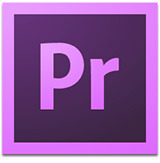Premiere Pro CS6: Multicam Cookbook

[This cookbook is designed to provide a fast checklist to creating multicam clips. For an in-depth video tutorial, check out my webinar on Multicam Editing in Premiere Pro CS6.
For a step-by-step written multicam tutorial, click here. ]
Premiere Pro calls them “multi-camera sequences,” because each “clip” contains a number of different clips. (I call them “multicam clips,” because the term is shorter.) A single multicam clip can contain video, audio, and/or stills. While you can mix and match codecs, frame size, frame rate and scanning, you will get the best performance if they match.
Before creating the multicam clip, all elements need to have a sync point. You can sync by matching an In assigned to each clip, an Out, clip markers, or timecode. Syncing using Timecode is the fastest method. If you use clapper slates, it is easiest to mark the clap with an In. If you use markers, all markers used to indicate a sync point must have the same name.
- Create a sync point for each clip.
- Select all elements in the Project panel.
- Create a multi-camera source sequence. Choose Clip > Create Multi-camera Source Sequence. (You can also select this option by right-clicking.)
- In the dialog, select the sync method and click OK. (As a note, you can also add clips to a multi-camera sequence once it’s been created.)
- Because, by default, Premiere only enables audio channel A1 in a multicam clip, enable other audio tracks manually before editing. To open a multicam clip for editing, right-click the clip and select: Open in Timeline. When the multicam clip is displayed in the Timeline, click the Toggle Track Output button for each audio track to turn it on or off, as necessary.
- Open the sequence in the Timeline into which you want to edit the multicam clip.
- Double-click to load the Multicam Clip in the Source Monitor.
- Set an In and/or Out, as necessary, the same as with any other clip.
- Edit the multicam clip into the Timeline.
- Choose Window > Multi-camera Monitor to edit the sequence. (The image grid automatically includes all current angles in the sequence, up to 16 images.)
- If you are using playback controls in the Timeline or Program monitor, click the Record On/Off Toggle button to turn it red. (Recording is automatic when you control playback from within the Multi-camera Monitor.)
- Click the Playback button to begin playback.
- To change angles, either click the camera image in the Multi-camera Monitor, or type 1 – 9 on the keyboard.
- Stop playback. (If you are using playback controls in the Timeline or Program monitor, click the Record On/Off Toggle button to turn off recording.)
- To replace one shot with another, put the Timeline playhead in the shot you want to change and click the image of the new shot in the Multi-camera Monitor.
- To cut and change angles, place the playhead where you want the cut to occur and Command-click the new image in the Multi-camera Monitor.
- Adjust and refine edit points using the roll trim, and other standard trimming techniques. (A Ripple trim is not allowed, as it would move clips out of sync.)
- Add transitions, or effects, and polish as necessary.
Done.
Bookmark the
permalink.
2,000 Video Training Titles
- Apple Final Cut Pro
- Adobe Premiere Pro
- DaVinci Resolve
Edit smarter with Larry Jordan. Available in our store.
Access over 2,000 on-demand video editing courses. Become a member of our Video Training Library today!
JOIN NOW
Subscribe to Larry's FREE weekly newsletter and
save 10%
on your first purchase.
2 Responses to Premiere Pro CS6: Multicam Cookbook
It’s really quite amazing that Adobe (despite its NEXT momentum) has totally ignored, once again, hordes of negative feedback about this workflow. The top two problems, unfixed after several versions, are:
1. Any refinement of where the camera transitions occur, by adjusting clip lengths in the Timeline panel, activates that panel so that playback in the Multi-Cam Monitor is extremely choppy on even the highest-end systems. The simple but tedious, time-wasting remedy has always been to activate the Multi-Cam Monitor panel every time before initiating playback. This is stupid. The Multi-Cam Monitor and the Timeline are ganged together anyway; playback should run smoothly regardless of which panel is activated (as it always performs in non-Multi-Cam mode).
2. Your recommendation of creating a Multi-Camera Source Sequence (introduced in CS6, I think, as the “official” Multi-Cam workflow) destroys what I think is a universal necessity for serious editors: being able to apply color and other effects to discrete source clips that apply to a whole Multi-Cam sequence
Hi
I wuold not say this comment,But a qwestion.
I have this problem, I assembled all my footage which were from HVR 4:20 and xdcam 4:22 started my multicam monitor after enabled multicam,but when I start playing it plays smoth for one or two minutes but then it is jerky or it stopes,dispite I upgrade my ram from 12 to 24gb and enabled cuda accelerating engine. it still can not play smooth ,what could my problem be.or am I missing some thing pls help me?
Thank you
Tekeste
OS win 7 64bit
i7 processor
Nvidia tgx 670
RAM 24GB
RAM 24 GB